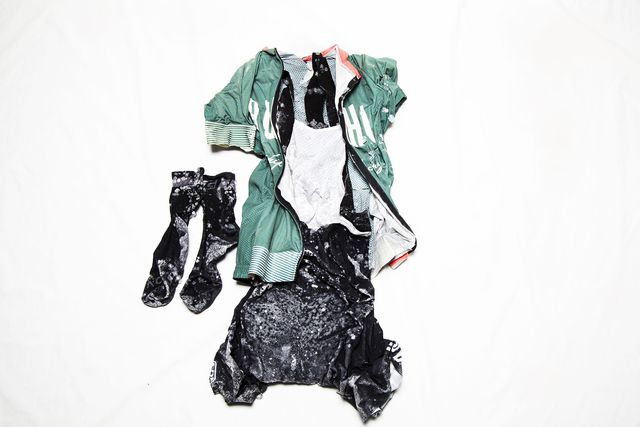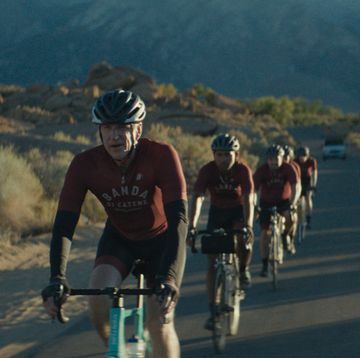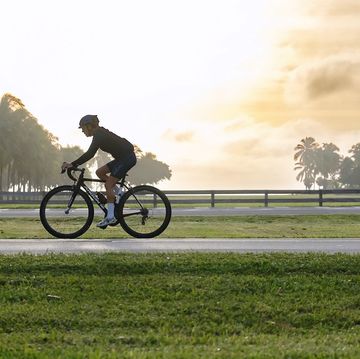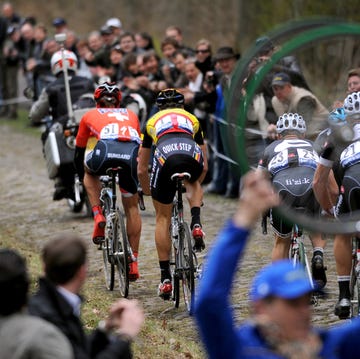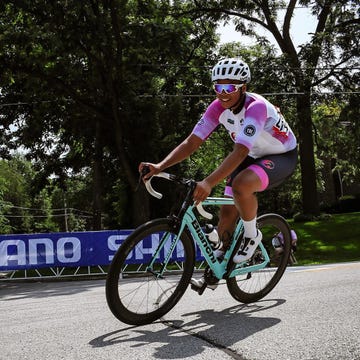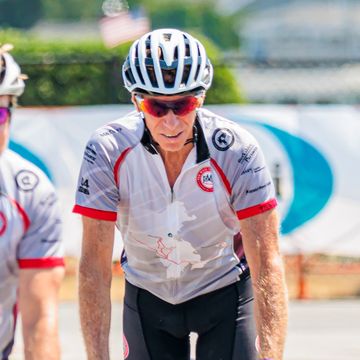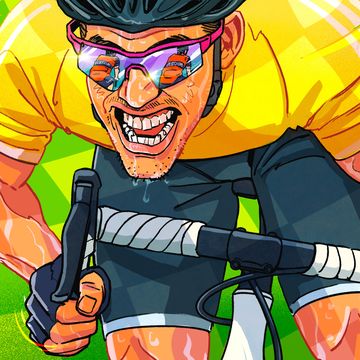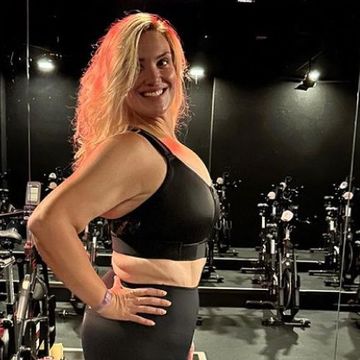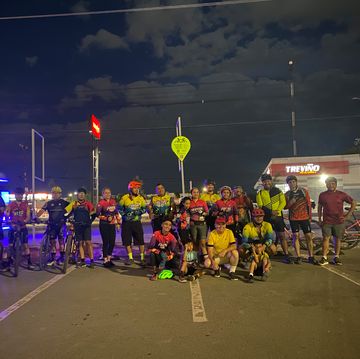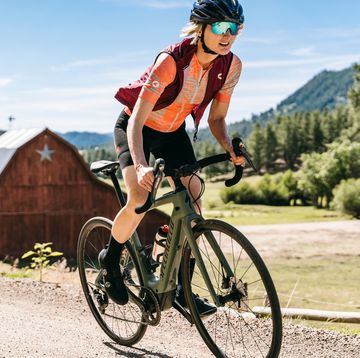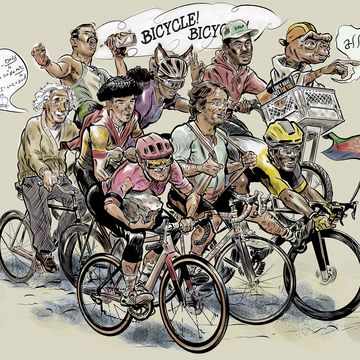Artist Alice Potts loves to see an athlete sweating buckets, whether on a ride or in the gym. That’s because her unique art features athletic apparel and gear with the sweat of athletes reincorporated into their own gear in the form of crystals.
The result is striking, if not beautiful.
Potts, 27, is a graduate of the Royal College of Art in London, where she studied fashion and accessories. Her bachelor’s and master’s degrees are in fashion, but she also studied chemistry and mathematics. She’s currently working from Athens, Greece, as a recipient of the Onassis fellowship.
Her background led to her current interest in bio-design—specifically, using bio-materials to bridge the gap between fashion and science. Potts is also concerned with social equality. To her, sweat is symbolic, “the purest form of a person,” she told Bicycling.
“The idea came to me by combining what I loved—innovation, science, art—and trying to find a way to get people to connect again and respect one another,” Potts said. “I love the idea that everyone sweats, and it can bring people together. In a society where we all label each other so much, this allowed me to show that we are all equal and we, at the end of the day, are all human.”
Her process is both artistic and scientific. She, quite literally, collects sweat from the athletes as they work out or perform their sport, both letting it drip into various containers and gently scraping it off their skin. Just collecting the sweat can take anywhere from four to six hours.
Potts then takes their sweaty athletic apparel and uses the collected perspiration to grow crystals. She does this through a process that she developed, first separating the water in the sweat from the naturally occurring substances like salt, ammonia, and urea. She then takes the resulting sweaty solution, places it back on the gear, and waits for the crystals to grow.
“Since both are from the same person, the sweat fits together like a jigsaw puzzle, allowing the crystals to form from within the material fibers,” Potts explained.
The most interesting part for her is that she never knows how a piece will turn out, though the crystals end up forming on the areas where the athlete was sweating the most.
One of Potts’s earlier projects involved using sweat from ballerinas, in part to show just how rigorous ballet is. Her Instagram account offers proof by showing how ballerinas—along with other athletes—sweat so much through their feet alone. Potts has depicted an array of crystalized ballet shoes, along with running shoes and soccer cleats.
Working with sweat as your primary medium certainly isn’t easy. It’s roughly 70 to 80 percent water, Potts noted, so it takes a lot of it to create her art.
“I’ve had to go through customs with 50 to 100 milliliters of sweat and was stopped like five times,” Potts said.
Last year, Potts met with the designers of Rapha to learn more about how they design their fabrics.
“I’m an absolute materials geek,” she said.
Potts told the designers that she would love to collaborate with them, and a few weeks later, they sent her Bradley Wiggins’s sweat in the mail.
[Find 52 weeks of tips and motivation, with space to fill in your mileage and favorite routes, with the Bicycling Training Journal.]
One of her most recent projects brings together three female cyclists: Imogen Cotter, Veerle Goossens, and Virginia Cancellieri. The resulting art was featured in an exhibit at the Bella Center at the Copenhagen International Fashion Fair.
There’s been quite a bit of discussion around equality in the sport of cycling, from whether women should have their own Tour de France to discrepancies in how much cyclists are paid between genders to simply promoting diversity overall. And in part, that’s exactly what Potts hopes to address with this project.
“Sweat crystals could allow people to visually see the time and effort put into a sport,” Potts said. “People can assume scale with amount, so by showing the sweat behind a competition or match that would normally just evaporate, for me, allowed people to see just how hard they had worked and trained prior, almost like a hidden currency.”
Because when you look at someone’s sweat, you don’t see gender, and you don’t see race. All you see is the effort that person gave.
When she’s not out riding her mountain bike, Jessica is an editor for Popular Mechanics. She was previously an editor for Bicycling magazine.
